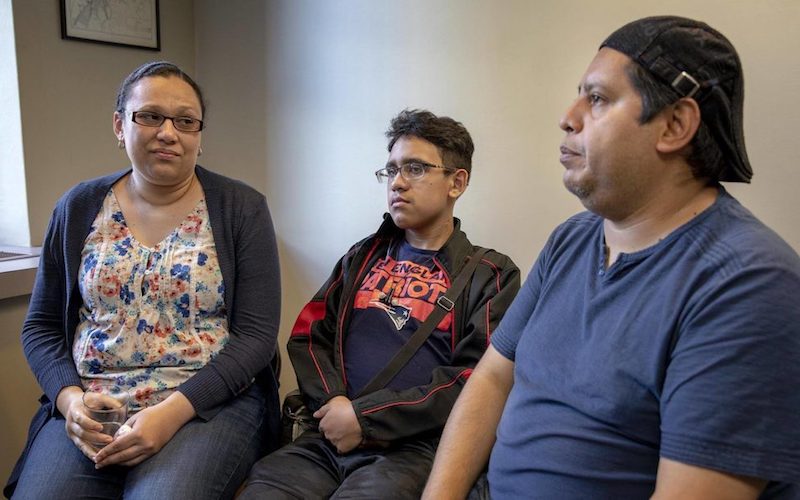Caring for immigrant children in politically contentious times

Facing public outrage, the U.S. Department of Homeland Security recently reversed their decision to end medical deferred action, a program allowing immigrants with serious illnesses to remain in the country while receiving lifesaving medical treatment.
Among those most relieved by the reversal was Dr. Lakshmi Ganapathi, pediatric infectious disease specialist at Boston Children’s Hospital and co-author of an article published in The New England Journal of Medicine, “Medical Deferred Action — Living on Borrowed Time.” Additional contributors, also from Boston Children’s, include clinical social workers Adolfo Caldas and Jacqueline Miranda and Drs. Julia R. Köhler, Gary Visner, and Gregory Sawicki.
In the October 2 article, Ganapathi and colleagues describe the vulnerability of the immigrant children they care for — those with rare and complex conditions requiring life-sustaining therapies — and explain why “eliminating medical deferred action is a death sentence” for these children and their families.
Yet their concerns remain today, even after the medical deferred action program has been reinstated. They assert that weaponizing access to medical care has a lasting emotional effect on patients and families and negatively impacts our society at large.
The letter ends with tips for providers on how to support immigrant patient families:
- Listen compassionately to our affected patients and strive to understand their situations, calm their fears, and support them as best we can
- Share our knowledge with colleagues and the public
- Seek information and guidance from local immigrant-led organizations
- Implement institutional practices and policies to protect immigrant patients
- Provide expert opinions to government bodies
- Participate in coordinated actions by professional organizations such as the American Academy of Pediatrics
- Join forces with others seeking to protect vulnerable people and oppose violence
“As much as the reversal is heartening and very welcome, all of us need to be vigilant,” says Ganapathi. “In today’s context, these collective actions may make the difference between life and death.”
Read the full article in the New England Journal of Medicine.
Related Posts :
-

Thanks to Carter and his family, people are talking about spastic paraplegia
Nine-year-old Carter may be the most devoted — and popular — sports fan in his Connecticut town. “He loves all sports,” ...
-

Genomic sequencing transforms a life: Asa’s story
Asa Cibelli feels like he’s been reborn. The straight-A middle schooler plays basketball and football, does jiu jitsu, is ...
-

Phenylketonuria: Giving treatment a second chance
Phenylketonuria (PKU) was once a common cause of intellectual disability. Children born with this metabolic condition lack phenylalanine hydroxylase (PAH), ...
-

A small act of kindness: Blood donations get Sadie off the sidelines after her aplastic anemia diagnosis
In March of 2024, Sadie’s life was interrupted. A busy high school senior with classes to attend, soccer matches to ...





